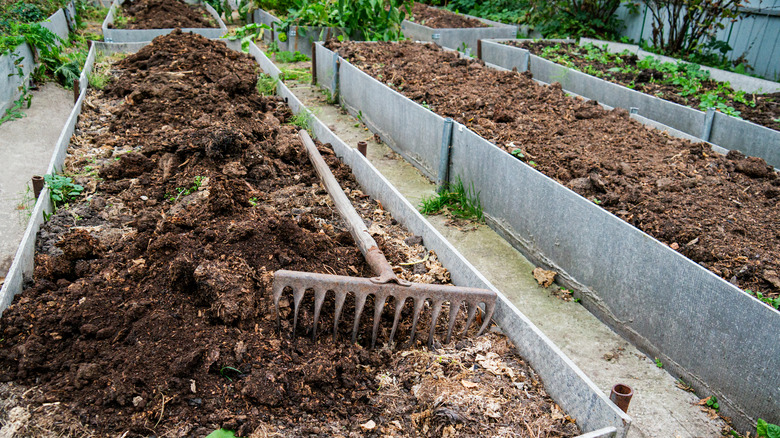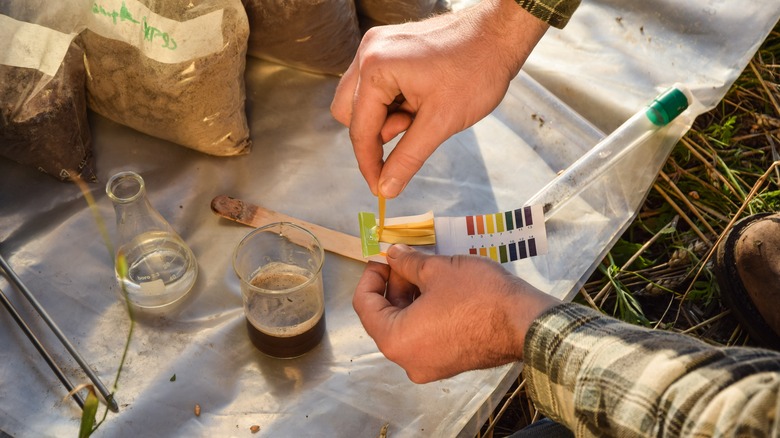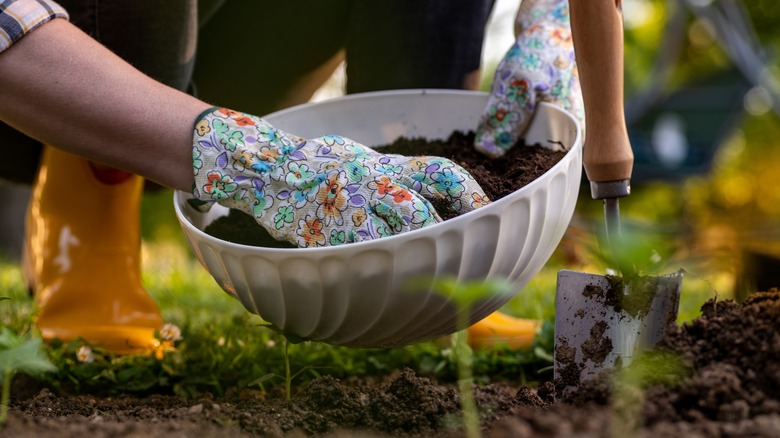Important Mistakes To Avoid When Using Manure In Your Yard Or Garden
We may receive a commission on purchases made from links.
Sustaining healthy plant life isn't just about watering or catching sunlight; nutrients are vital in nurturing growth. And what better way to add crucial nutrients like nitrogen to your soil than good old manure? However, just like any good doctor who prescribes the correct dosage, you must observe discretion, precision, and timing while layering this substance. Manure application mistakes such as using fresh manure, incorrect usage, wrong timing, and overlooking vital tests could make your flourishing garden a barren desert.
While you might reckon fresh means better, in the manure dictionary, this could spell disaster for your darling plants. Fresh manure prepares your soil for an unwelcome intrusion of deadly pathogens and parasites, among them E. coli. Not to mention that it's overly rich in nitrogen and ammonia, which can burn your plant roots and impede seed germination. In addition, per the University of Nebraska-Lincoln, weed seeds ingested unintentionally often survive our domestic animals' digestive systems, only to be reintroduced in your garden through fresh manure, leading to unwanted weed proliferation.
The best option is seasoned manure. But heed the words of Dr. Gerhardus Nortjé, a senior lecturer at the Department of Environmental Sciences at the University of South Africa, who cautioned Farmer's Weekly Magazine, "Aerobic (well-aerated) conditions should not be allowed to develop, as much of the N (Nitrogen) will be lost. The manure should be kept dense and moist during the sweating period."
Bad timing and overlooking soil testing
Another indefensible mistake is applying manure without testing your soil first. Picture yourself loading up soil that's already oozing nutrients with yet more nutrients. The consequence could be nothing short of a nutrient circus, where excess forms an imbalance. So, using an at-home soil test kit, like the Luster Leaf 1601 Rapitest Test Kit on Amazon, works to get a 360-degree analysis of what lies beneath. Alternatively, send off a scoop of your soil to a local extension office for comprehensive testing. Don't forget to test that manure, too.
Timing, as they say, is everything, and this remains unflinchingly true when using manure in your garden. Application at the wrong time is like placing an orchestra without a conductor's guidance — it's off-key and glaringly disastrous. Ideally, you need a two-week window post-application for the manure to integrate, protecting your plants from nutrient-induced injuries. Fall is the golden manure application moment. That's when the litter is readily available and perfect for enriching your garden over the winter for a triumphant spring planting.
Be cautious about applying in winter. The frozen land is an unfavorable barrier between the nutrient-infused manure and soil; with reduced absorption, the risk of runoff shoots up highly during the thaw. Similarly, if the weatherman predicts heavy rain, hit pause on that manure. Per Michigan State University, your luscious load of nutrients could be washed away, squandering all that carefully preserved goodness (and your hard work).
Wrong manure type and over-application
Discriminating between different types of manure is crucial, and not all dung is dealt with equally. According to the University of Maine, manure from cats, dogs, and pigs can be a host to resilient parasites that pose a potential risk to humans. Inviting them to your DIY compost piles or vegetable gardens can literally lead you down a path of diseases. As for the best type of manure to use in your yard or garden, substitute the villains with the output from cows, horses, sheep, goats, poultry, and llamas — a selection that the Pennsylvania State University gives a robust thumbs-up for nurturing your yard or garden. However, heed a word of caution. Rich in nitrogen, chicken litter can spark a negative reaction in new plants when used indiscriminately. Balance is indispensable, as always.
A common adage says, "too much of anything is bad," and manure sets no exception. Over-application can wreak havoc on your green companions, transforming the Eden in your backyard into a nightmare. Regrettably, the lore of compost usually downplays this potential pitfall. An overabundance yields luxuriant foliage, yes, but at an unseen cost. Heightened greenery at the expense of actual productivity (fruits) is not what you signed up for. Tip the scales further, and you may find yourself struggling with plant-damaging nutrient imbalances. As for how much manure to add to the soil, a layer of 1 to 2 inches should suffice.


